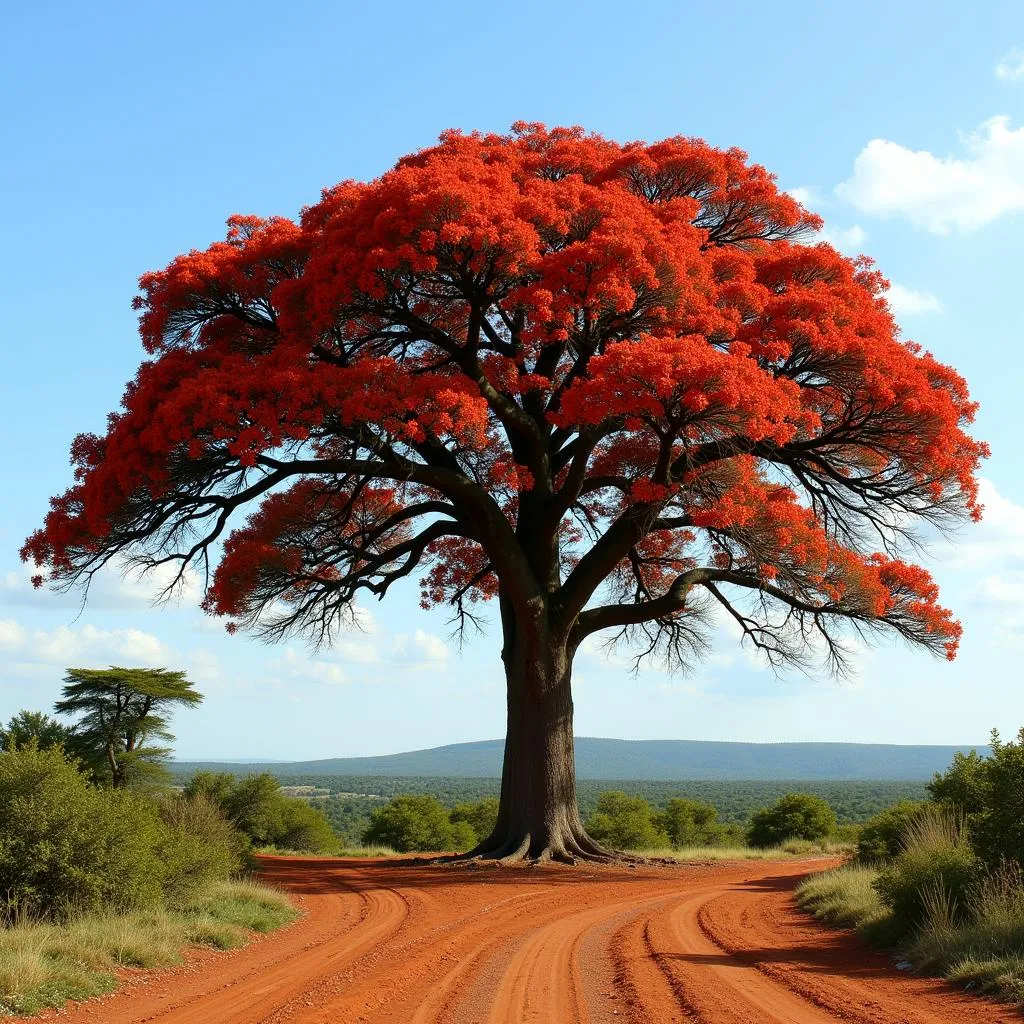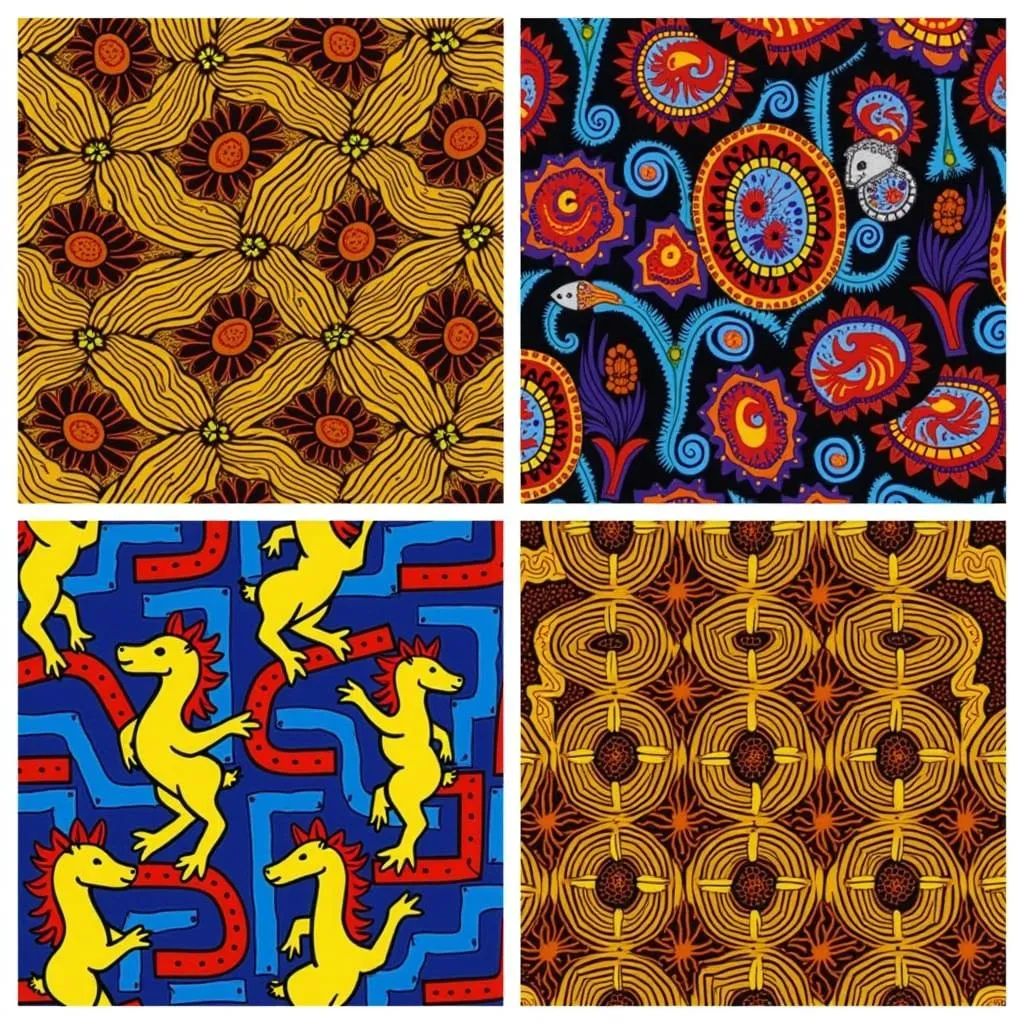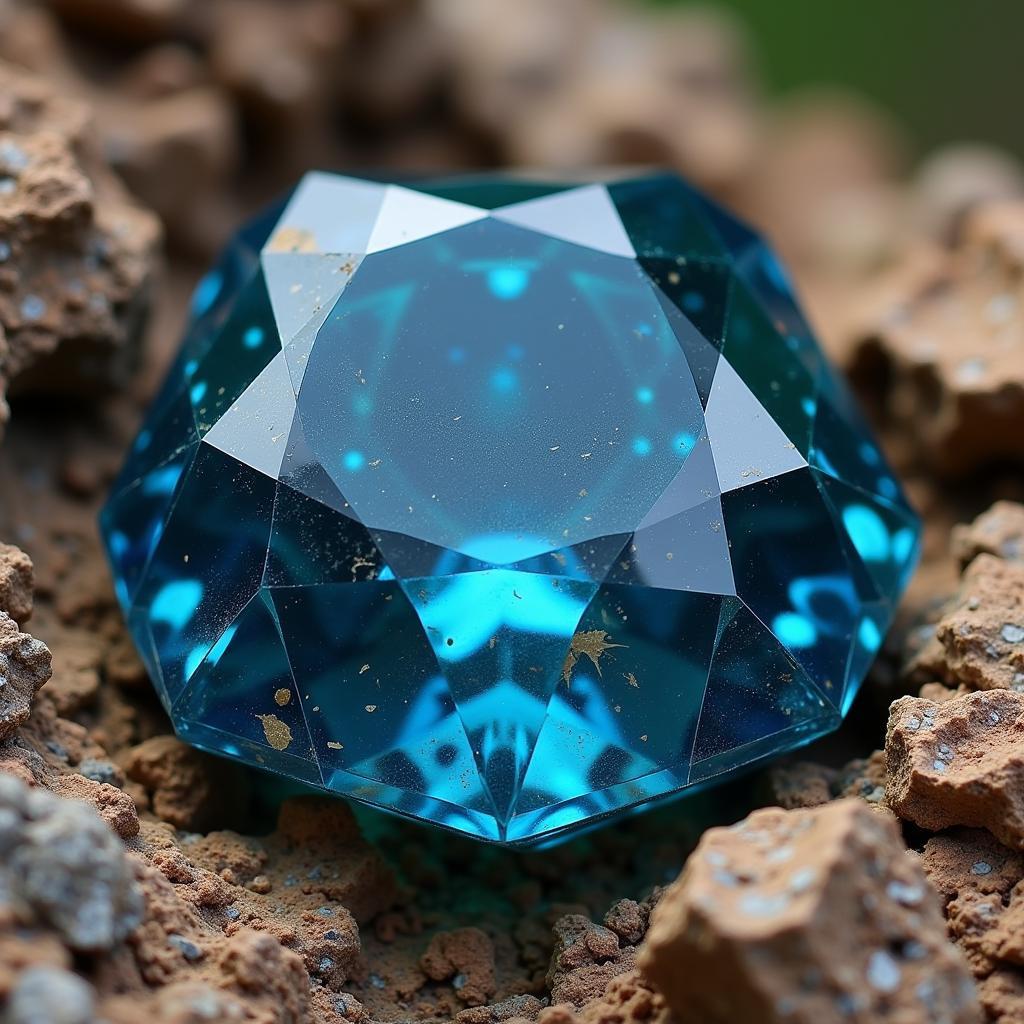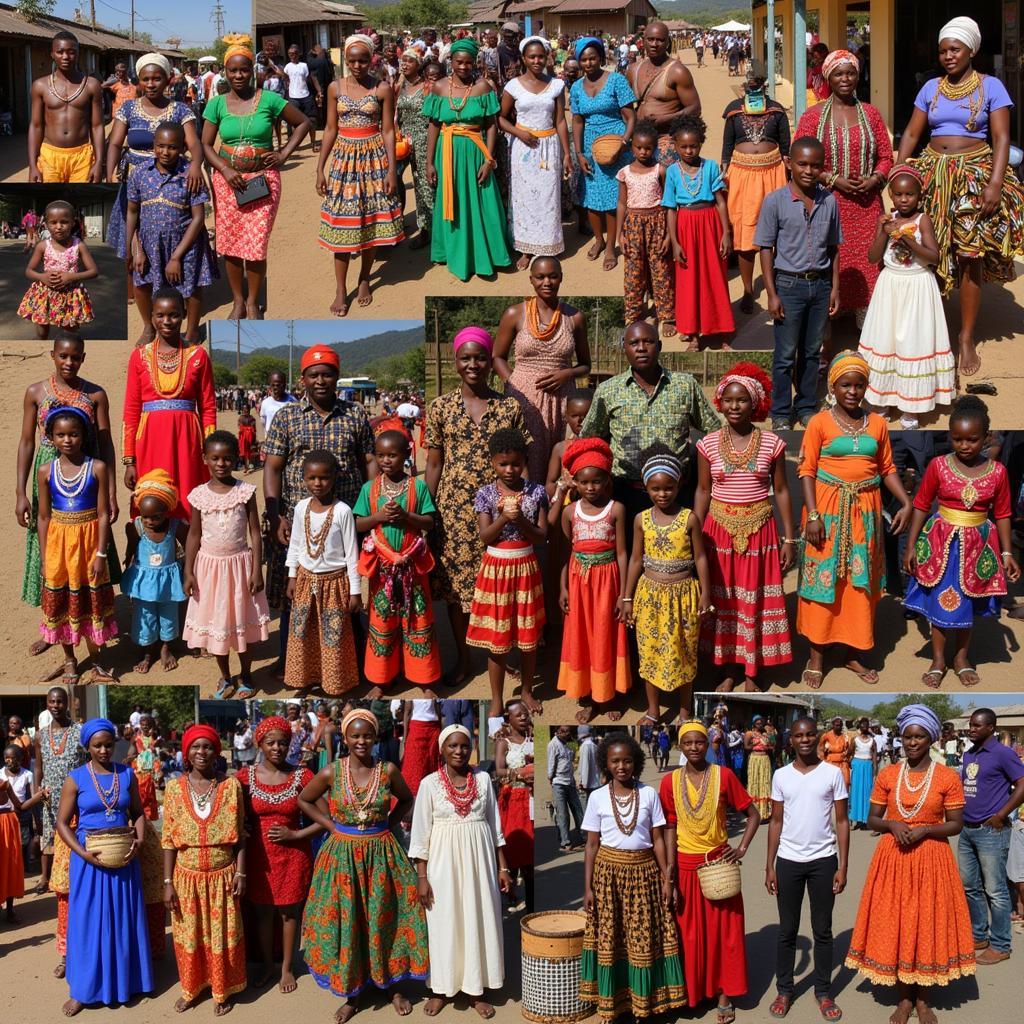Unveiling the Vibrant Beauty of the African Flamboyant
The African Flamboyant, a symbol of resilience and striking beauty, paints a vibrant tapestry across the African landscape. This majestic tree, scientifically known as Delonix regia, captivates with its fiery display of scarlet blossoms, earning it a place of honor in folklore, art, and everyday life.
A Botanical Marvel: Appearance and Habitat
Imagine standing beneath a canopy of fiery hues, the sun filtering through delicate petals like stained glass. That’s the allure of the African flamboyant, a tree that commands attention with its grandeur. Growing up to 40 feet tall, its umbrella-shaped crown spreads wide, offering a generous swathe of shade in the tropical heat.
The flamboyant’s true spectacle unfolds during its flowering season. Vivid red, orange, and sometimes yellow flowers erupt in clusters, creating a breathtaking contrast against the lush greenery of the surroundings. These intricate blooms, resembling orchids in their delicate structure, attract a myriad of pollinators, from bees to birds, buzzing with life.
 African Flamboyant in Full Bloom
African Flamboyant in Full Bloom
This captivating tree thrives in the tropical climates of Madagascar, its native home, as well as other regions of Africa, Asia, and the Americas. It has become a cherished part of the landscape, gracing avenues, gardens, and parks with its vibrant presence.
Beyond the Bloom: Cultural Significance and Uses
The African flamboyant transcends its botanical classification; it is deeply intertwined with the cultural fabric of various societies. In many African cultures, the tree holds symbolic meaning, often associated with strength, resilience, and the cyclical nature of life.
For some, the flamboyant’s fiery blooms herald the arrival of spring or the rainy season, marking a time of renewal and abundance. Its shade provides a welcome respite from the sun, making it a natural gathering place for communities, fostering a sense of togetherness.
 Villagers Gathering Under a Flamboyant Tree
Villagers Gathering Under a Flamboyant Tree
Beyond its cultural significance, the African flamboyant boasts practical uses. Its durable wood finds application in furniture making, while its bark and leaves have been traditionally used in various medicinal practices. The tree’s seeds, encased in long pods, are also a source of food in some regions.
The African Flamboyant: A Legacy of Beauty and Resilience
The African flamboyant stands as a testament to the continent’s vibrant biodiversity and cultural richness. It is a living embodiment of resilience, thriving in diverse environments and inspiring generations with its fiery beauty. From its striking appearance to its deep-rooted cultural significance, the African flamboyant continues to captivate hearts and minds, reminding us of the enduring power of nature’s artistry.
Frequently Asked Questions About the African Flamboyant
What is the best time of year to see the African flamboyant in bloom?
The African flamboyant typically blooms during the spring and summer months, with the exact timing varying depending on the specific location and climate.
How long does the flowering season of the African flamboyant last?
The flamboyant’s spectacular blooming season can last for several weeks, with the vibrant flowers gradually giving way to long, seed-filled pods.
Can I grow an African flamboyant tree in my garden?
If you live in a tropical or subtropical climate with plenty of sunshine and well-drained soil, you can certainly cultivate this magnificent tree in your garden.
What are some interesting facts about the African flamboyant tree?
The African flamboyant is also known as the “flame tree” or “royal poinciana.” Its seeds can remain viable for decades, and the tree has been known to live for over 100 years.
Where can I find more information about the African flamboyant and other fascinating African flora?
To delve deeper into the world of African plants and their cultural significance, explore our other articles like African Golden Oriole and discover the wonders of 1960s African American Fashion.
Do you have other questions about the African flamboyant?
Contact us at +255768904061, email us at [email protected], or visit us at Mbarali DC Mawindi, Kangaga, Tanzania. Our dedicated team is available 24/7 to assist you.

